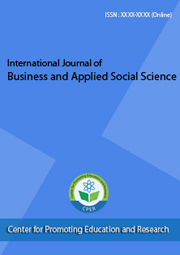current
Table of Contents
Articles
Author(s): Romeo Escobar, PhD, LCSW, ACSW
Abstract:
According to the Centers for Disease Control and Prevention, 2018, suicide is a leading cause of death in the United States. Suicide rates have increased in almost every state in the United States from 1999 through 2016. For many individuals with suicidal ideations, mental health disorders are often seen as the cause of suicide; however, suicide is not only caused by a single factor. Studies have shown several factors contribute to suicide which may include but is not limited to relationship issues, substance use, physical health, job-related issues, money, legal, and/or housing stressors (CDC, 2018). Suicide is a public health crisis reaching epidemic proportions and has claimed the lives of more than 45, 000 individuals in the U.S. (Brodsky, Spruch-Feiner, & Stanley, 2018). Due to the increasing number of suicides, mental health practitioners must be clinically prepared to provide appropriate interventions to help prevent suicide. Thus, this paper aims to share some guidelines and/or tips for managing an individual with suicidal ideation from a practitioner’s perspective.






